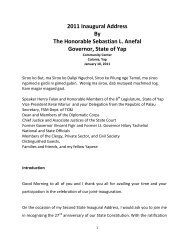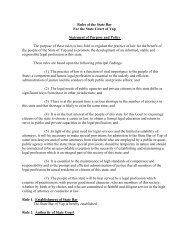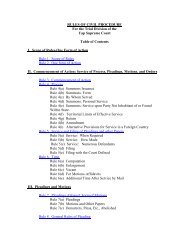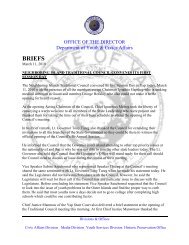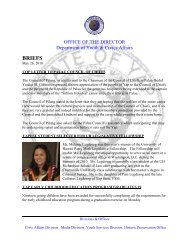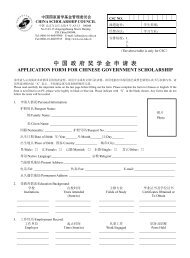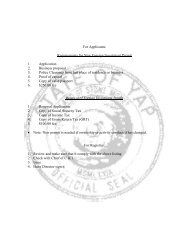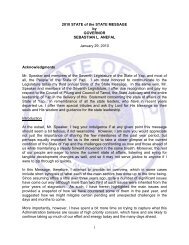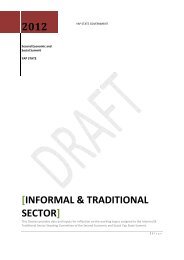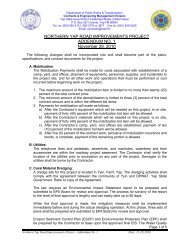CORRIGENDUM No. 2 - Yap State Government
CORRIGENDUM No. 2 - Yap State Government
CORRIGENDUM No. 2 - Yap State Government
You also want an ePaper? Increase the reach of your titles
YUMPU automatically turns print PDFs into web optimized ePapers that Google loves.
• Manufacturer’s Tolerance: Most manufacturers rate their modules ± a percentage (eg ±5%) or wattage<br />
(eg ±2W). Unless every module is tested and its actual rating is known then the modules should be derated<br />
by the manufacturer’s tolerance.<br />
• Dirt: Over a period of time dirt or salt (if located near the coast) can build up on the array and reduce<br />
the output. The output of the module should therefore be derated to reflect this soiling. The actual value<br />
will be dependent on the site but this can vary from 0.9 to 1 (i.e. up to 10% loss due to dirt).<br />
• Temperature: Modules’ output power decreases with temperature above 25°C and increases with<br />
temperatures below 25°C. The average cell temperatu re will be higher than the ambient temperature<br />
because of the glass on the front of the module and the fact that the module absorbs some heat from<br />
the sun. The output power and/or current of the module must be based on the effective temperature of<br />
the cell. This is determined by the following formula:<br />
T cell-eff = T a.day + 25°C<br />
Where<br />
T cell-eff = the average daily effective cell temperature in degrees Celsius (°C)<br />
T a.day = the daytime average ambient temperature for the month that the sizing is being undertaken.<br />
With switched controllers the temperature effect was used to determine the operating current of the<br />
module/array. With MPPT’s the derating power factor must be calculated.<br />
The three main types solar modules available on the market each have different temperature coefficients.<br />
These are:<br />
• Monocrystalline: Modules typically have a temperature coefficient of –0.45%/ o C. That is for every<br />
degree above 25 o C the output power is derated by 0.45%.<br />
• Polycrystalline: Modules typically have a temperature coefficient of –0.5%/ o C.<br />
• Thin Film: Modules have a different temperature characteristic resulting in a lower co-efficient typically<br />
around 0%/°C to -0.25%/°C, but remember to check with the manufacturer<br />
The typical ambient daytime temperature in many parts of the Pacific is between 30 and 35 o C during some<br />
times of the year. So it would not be uncommon to have module cell temperatures of 55 o C or higher.<br />
For the worked example Assume the ambient temperature is 30 o C..<br />
Therefore the effective cell temperature is<br />
30 o C +25 o C = 55 o C<br />
Therefore this is 30 o C above the STC temperature of 25 o C.<br />
The 80 W P module used in this example is a polycrystalline module with a derating of -0.5%/ o C<br />
Therefore the losses due to temperature would be:<br />
Temperature loss = 30 o C x 0.5%/ o C = 15% loss<br />
This is a temperature derating factor of 0.85<br />
Assuming a 5% dirt derating then the adjusted output power of the 80W module is:<br />
Adjusted module power = 80 x 0.95 x 0.95 x 0.85 = 61.4W<br />
NUMBER OF MODULES REQUIRED IN ARRAY<br />
To calculate the required number of modules in the array, divide the required array power by the adjusted<br />
module power.<br />
Issue 1 September 2012 Page 12



